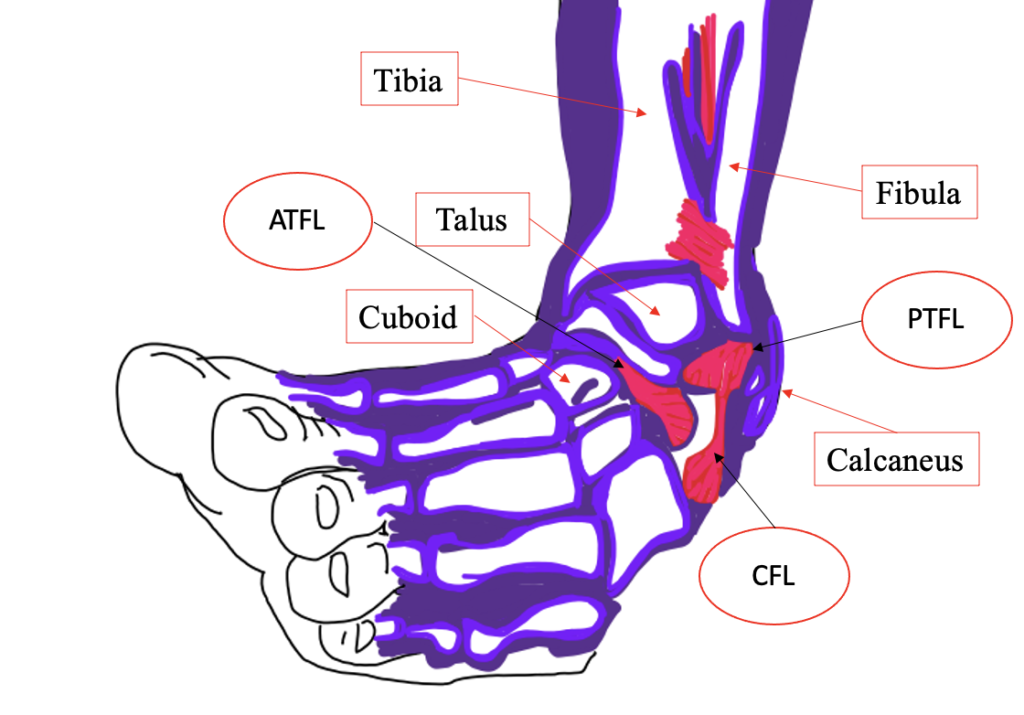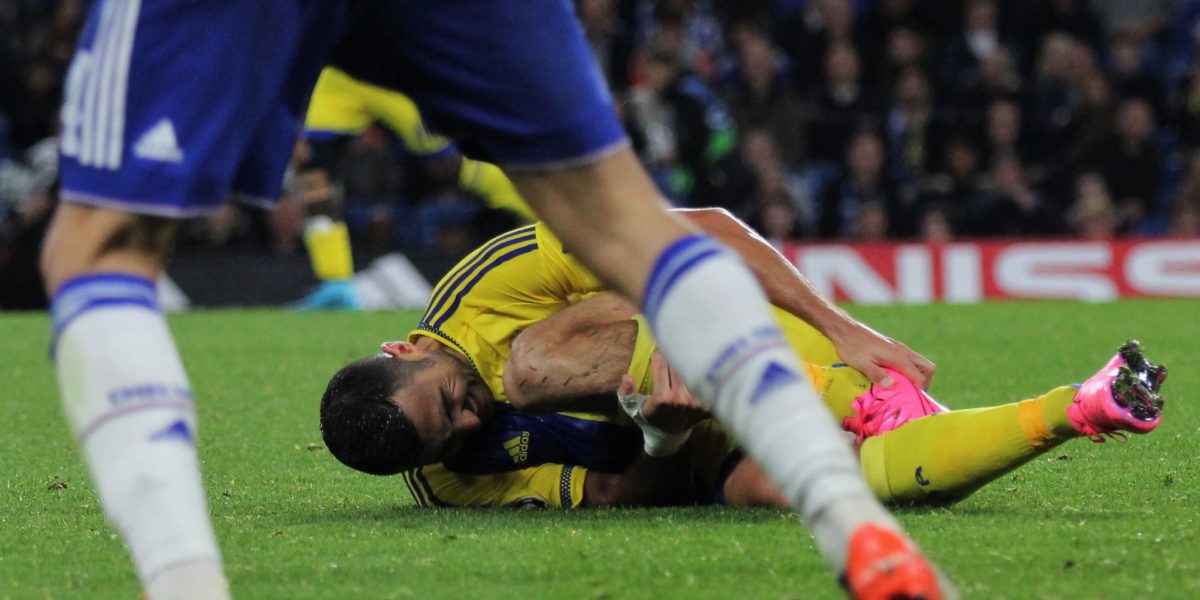Ankle injuries – either sprains or fractures – are one of the most common sports traumas plaguing the US today. Sprains are overextensions or tears in ligaments. Fractures, on the other hand, are broken bones.
Here, we will focus on sprains of which there are three grades. To help visualise a sprain, think of a Fruit By the Foot (the gummy fruit snack you may have eaten as a child). A Grade 1 sprain involves stretching like if you were to pull on either end of the fruit rope and small tears start to develop along the middle. A Grade 2 sprain develops when the tear is larger and originates from a side; a grade 3 sprain is a complete tear into two pieces.
A Little Background
The ankle joint, also known as the talocrural joint is a synovial hinge joint that mainly moves in dorsiflexion and plantarflexion 1. If you were sitting on the ground with both legs extended in front of you, dorsiflexion is the movement of your foot upwards toward your shin, and plantarflexion is the action associated with pointing your toes moving away from your body.
Sprains & Pains
The most common type of ligament injury are lateral ankle sprains or inversion sprains where the ankle joint over rotates in the outward direction, especially an inversion while in plantarflexion 2. Exercises that include running, jumping, and/or cutting put the athlete’s ankle at high risk for sprains. This is especially seen in soccer, football, basketball and volleyball players.

Figure 1 above shows an ankle in the common and compromising position of an inversion sprain. The circled ATFL, PTFL, and CFL are ligaments in the joint, namely the Anterior Talo-Fibular ligament, the Posterior Talo-fibular ligament, and the Calcaneofibular ligament respectively. Additionally, the boxed call outs are bones in the foot.
Numbers show that close to 70% of patients that had experienced a lateral ankle sprain in the past repeated the same injury to their ankle1.
What is the medical explanation behind repeated ankle injuries?
One study by Doherty et al. followed emergency room visits for ankle injuries and found that 40% of patients with ankle sprains had to seek medical treatment for another ankle injury within the year. Yet, another statistic found that over half of people who experience ankle sprains don’t even go to a hospital.
Ankle sprains are sometimes deemed as a “walk-off injury“, or one that hurts momentarily but just needs a few minutes before resuming activity. However, many people suffer from prevalent and reoccurring ankle sprains. Officially dubbed Chronic Ankle Instability or Sprained Ankle Syndrome, this condition is characterised by a host of symptoms including pain, swelling, perceived and actual instability, balance issues, and joint weakness. Chronic Ankle Instability, or CAI more commonly, can also cause a decrease in physical activity, changes to walking or running form, onset arthritis, and problems with knees and hips due to overcompensation1.
The tried-and-true course of action to prevent CAI is efficient rehabilitation. A study showed that if the patient recovers fast enough, the body won’t change movement patterns.
Problem: Altered Movement Patterns
The changing of movement patterns in the ankle joint, or arthrokinematics1 is one of the main factors that contributes to CAI. The brain, like a protective mama bear, trains the body to operate (walk, run, jump) in a different manner to protect the strained ligaments. Over time, muscle memory kicks in and the compensation for ankle mobility becomes your new normal. This adoption of an incorrect form of walking, running, jumping, etc. can backfire and translate to repeated ankle injuries. This muscle memory has been identified as a neurosignature2 from Melzack’s neuromatrix of pain theory; however, this pain theory also describes how elimination of the pain, stress, or chronic symptoms associated with an ankle sprain can prevent reoccurrence – elimination, that is, through efficient rehab.
Solution: Efficient Rehabilitation
A quick recovery can be achieved through various muscle strengthening exercises from a licensed physical therapist or “ankle disk training,” which basically consists of a flat board mounted on a semi-circle. By standing on this unbalanced board, stability can be practiced as well as specific ligament targeting to build muscle. A more serious solution of ankle surgery showed a 90% success rate of mediating mechanical instability, but this is not a widely-practiced nor traditional treatment plan for CAI3. In fact, ankle taping and/or lace-up 3 bracing when exercising proved most helpful in preventing over rotations of the lateral ligaments.
Featured image “Chelsea Vs Maccabi Tel-Aviv” by joshjdss is licensed under CC BY 2.0.
